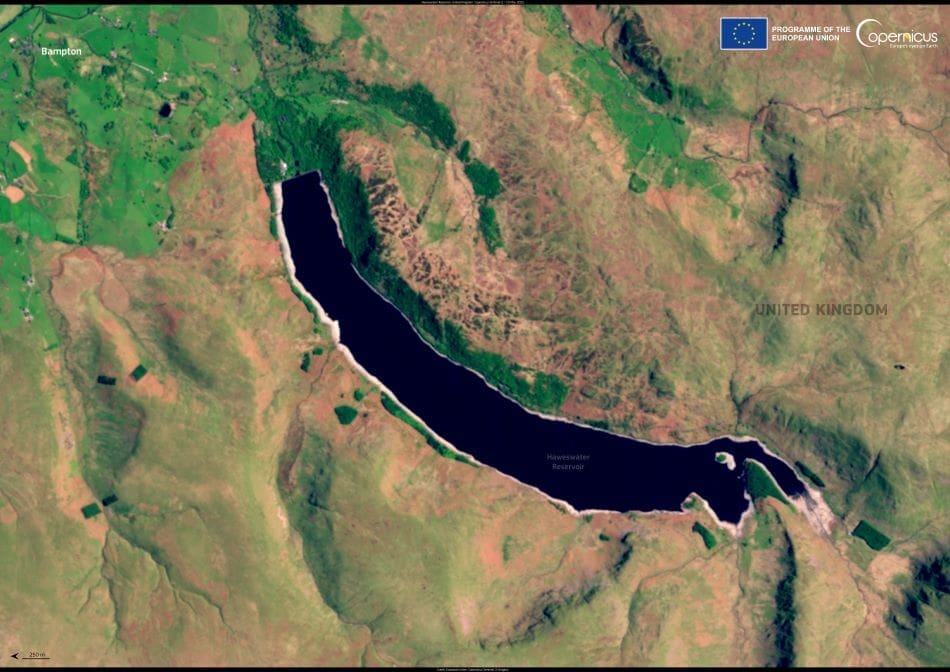The United Kingdom is heading into summer 2025 under intensifying drought conditions, following what scientists have confirmed as the driest spring on record. Rainfall was well below average across much of the country between March and May, leaving soils parched and reservoir levels dropping steeply.
This Copernicus Sentinel-2 image, captured on 13 May 2025, shows the Haweswater Reservoir in England’s Lake District, where water levels have fallen by 30% since the start of the year. Parts of the exposed lakebed are clearly visible in the satellite view, offering a stark visual indicator of the strain on water resources.
According to the UK Centre for Ecology and Hydrology, most of the country’s catchments are now running below normal, and the outlook remains dry. Scientists say the conditions are likely to lead to “exceptionally low river flows” during the summer months, increasing the risk of drought across several regions. This could affect crop irrigation, reduce drinking water availability in some areas, and place added stress on aquatic habitats.

The Guardian reported that April 2025 was especially dry in parts of central and southern England, where some rivers recorded their lowest flows in over two decades. The persistent high-pressure systems that limited rainfall also contributed to higher-than-normal temperatures, worsening evaporation and further reducing moisture in the soil.
The Met Office has indicated there is little sign of a sustained change in the weather pattern, with dry, warm spells expected to continue into June. While water companies have not yet announced restrictions, some have warned that hosepipe bans may be introduced if current trends persist.
Data from the Copernicus Sentinel satellites are helping scientists track water shortages in real time. These Earth observation tools allow for accurate monitoring of lakes, reservoirs, and rivers, giving environmental agencies critical information for managing drought impacts as conditions evolve.
Featured image credit: European Union, Copernicus Sentinel-2 imagery



